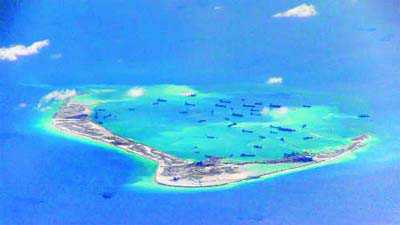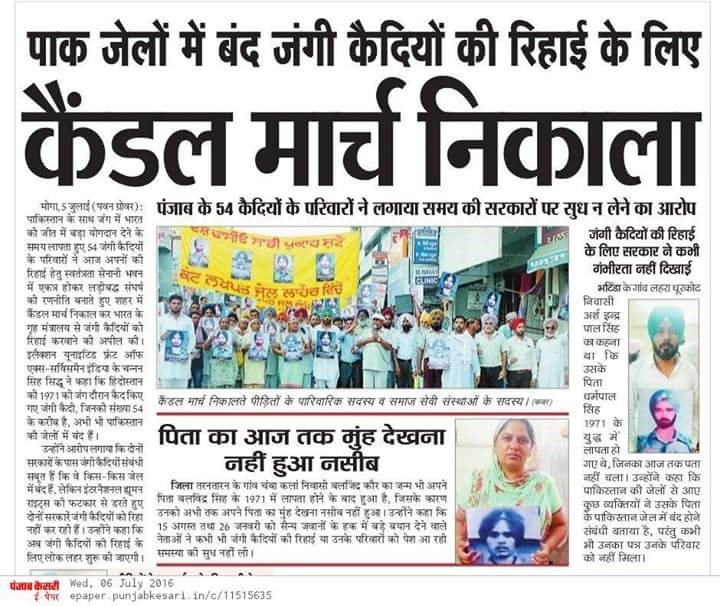Infuse fresh blood into Kashmir’s bureaucracy

MISSING IDOL : Kashmiri youth have no real heroes to focus on.
THE deluge of writing in the media on the death of Burhan Wani, the young Kashmiri terrorist from Tral, and the subsequent violence that has spewed into the streets in a near 2010-like situation is actually a phenomenon which often occurs. The unfortunate thing is that it does only when such incidents take place. With so much already written, my approach here is to project the usually unknown facts which can only be gleaned once you are there with the Kashmiri people. Has it ever occurred to people in Delhi that the lofty Pir Panjal range is a psychological barrier to all communication to and from Kashmir? It used to hit me very often as I flew out of Srinagar. In Delhi, my thinking would change, returning to its normal Kashmir orientation the moment I flew past the range. It may sound exaggerated, but is the nearest to the truth of a phenomenon most may never understand. What is perceived in Delhi is perceived differently in Srinagar by whosoever he is. For those in Delhi, there has to be a deliberate attempt to understand what happens in Kashmir. The first of the lessons which must dawn on them is that communication is the key to the issue. That is where we fail miserably because everyone here thinks he knows Kashmir; no one is willing to listen and change his mind. This is why I stated during a TV panel discussion that in the last six months, not once have I attended a round-table discussion, or a seminar, on Kashmir. I attend one on diverse subjects almost every other day. No one feels it is important to understand Kashmir and that is the reason why a strategy has failed to evolve. Communication is the core of the desired strategy and the means to execute this cannot be left to a couple of well-meaning bureaucrats, policemen, or Army men. They can all do their bit, but within limits. Where India has failed is the intellectual application of mind to the sponsored proxy conflict in Kashmir. Burhan Wani is only the symptom which helps attract attention when it is flagging. It is the attention which has been lacking and the strategic and intellectual community is very largely to blame for this.How many would actually know that Kashmir’s youth lacks inspiration because it has no heroes to focus on? That is why a Burhan Wani comes along and captures their attention. This generation has grown under the shadow of the gun, in an environment of checkposts, sometimes five in a distance of 50 km. The ills of a conflict zone on the psyche of a population can only be realised once you are there. Angst and alienation is a natural outcome. No one ever steps back to deliberate upon a curious fact. Tral, the village to which Burhan belonged, and one which carries the most negative perception in the eyes of security practitioners, has sent hundreds into the ranks of terrorists. Not known is that it has also sent hundreds into the ranks of the JAK LI, the Indian Army regiment of which one of the highest profile units does service at Rashtrapati Bhavan today. They are all fiercely loyal and patriotic soldiers. A strange phenomenon, indeed. When I set out to examine this fact in 2011, I interacted frequently with almost 500 young, and mostly educated, Kashmiri youth at different places. Given a chance to vent their angst against the nation, against the system and against me, I absorbed their abuse, but when I met them informally over tea, almost everyone of them had only one enquiry — how they could be enabled to join the Indian Army? I often reflect on this experience and deduced that the psyche of the Kashmiri youth has never been studied and acted upon. Suitably engaged with a communication strategy that understands their limitations and empathises with them, gives them the opportunity to speak instead of talking down to them and listens to it all, may work towards drawing them away from the negativity which is a part of their every day lives.The negative psyche has also provided psychological space to extremist religious ideology to set in, against which we need more refined answers than simply cliched responses of counter-radicalisation measures. We knew all along that Islamic radicalism was finding its place in Kashmiri society, but never really concerned ourselves with finding the counter to it. We need to do it more urgently than ever and it’s even more difficult today.It’s not the youth alone that needs engagement, but every segment of Kashmiri society, and that includes the other major stakeholders — the Kashmiri Pandits. We need all Kashmiris together rather than engaging separately because, ultimately, if normalcy has to return, they have to live together. The separate engagement only encourages each to speak against the other and does no good to either cause.Let us get some fresh blood into Kashmir’s bureaucracy and administration. It will be some time before the outstanding young Kashmiri men and women, who have in recent years joined the Indian Civil Services, come to occupy positions of prominence. I have all praise for the existing senior members, but they need fresh thinking; the approach is too stilted and needs energy and innovation. My simple advice — give Kashmir two comfortable winters in terms of logistics, administration and daily life and see the mindsets change.Lastly, at different places and times I have repeated ad nauseum that solutions to problems seldom come from within the government. The officials remain too busy, have no continuity and are simply too careful about their careers. Solutions come from independent or even semi-independent institutions and from uncluttered minds. They don’t also come from one-off committees such as interlocutors, but from continuous study and monitoring of the situation and institutional memory. Since it is communication, or the lack of it, that we have identified as the major concern not only in the case of Kashmir, but equally of the Northeast, and of the growing problem of radicalism, all this comes under the scope of strategic communication strategy. There is an urgent need for a multi-discipline body at the highest level to evaluate the current problems, suggest ways and oversee implementation. National problems require national-level solutions and a body akin to the UPSC is what I can suggest over any idea of a body such as the Minorities Commission or the National Integration Council.— The writer is a Senior Fellow with the Delhi Policy Group























































































































